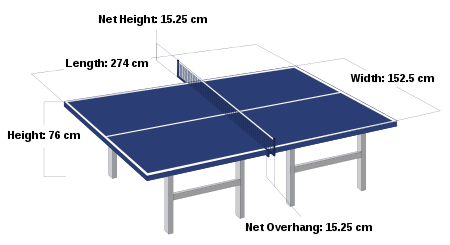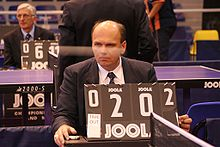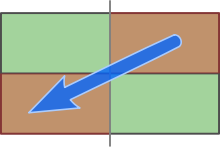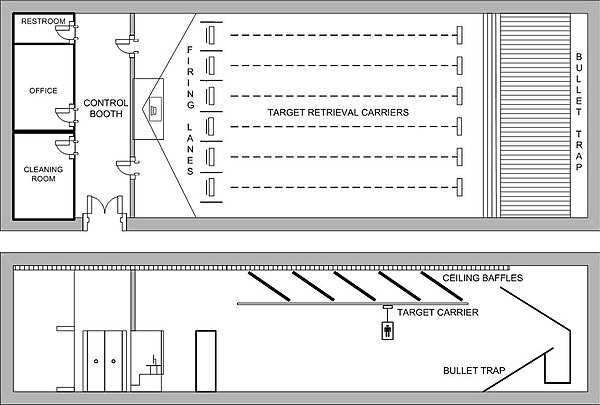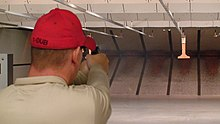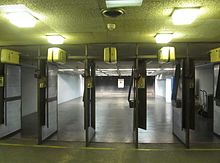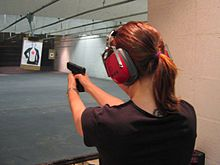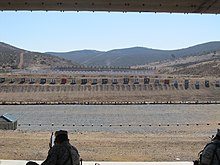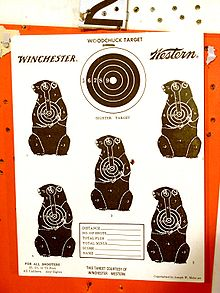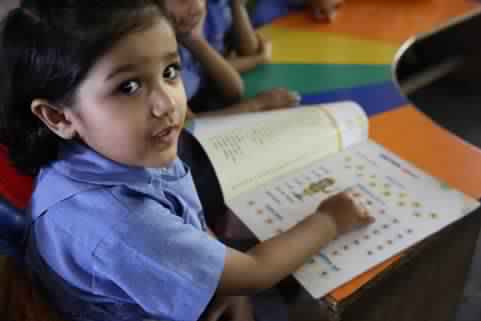cricket ,table tennis Shooting range
Table tennis, also known as ping-pong and whiff-whaff, is a sport in which two or four players hit a lightweight ball, also known as the ping-pong ball, back and forth across a table using small rackets. The game takes place on a hard table divided by a net. Except for the initial serve, the rules are generally as follows: players must allow a ball played toward them to bounce one time on their side of the table, and must return it so that it bounces on the opposite side at least once. A point is scored when a player fails to return the ball within the rules. Play is fast and demands quick reactions. Spinning the ball alters its trajectory and limits an opponent's options, giving the hitter a great advantage.
Table tennis is governed by the worldwide organization International Table Tennis Federation (ITTF), founded in 1926. ITTF currently includes 226 member associations.[3] The table tennis official rules are specified in the ITTF handbook.[4] Table tennis has been an Olympic sport since 1988,[5] with several event categories. From 1988 until 2004, these were men's singles, women's singles, men's doubles and women's doubles. Since 2008, a team event has been played instead of the doubles.
After the 2000 Olympics in Sydney, the ITTF instituted several rule changes that were aimed at making table tennis more viable as a televised spectator sport.[18][19] First, the older 38 mm (1.50 in) balls were officially replaced by 40 mm (1.57 in) balls in October 2000.[7][20] This increased the ball's air resistance and effectively slowed down the game. By that time, players had begun increasing the thickness of the fast sponge layer on their paddles, which made the game excessively fast and difficult to watch on television. A few months later, the ITTF changed from a 21-point to an 11-point scoring system (and the serve rotation was reduced from five points to two), effective in September 2001.[7] This was intended to make games more fast-paced and exciting. The ITTF also changed the rules on service to prevent a player from hiding the ball during service, in order to increase the average length of rallies and to reduce the server's advantage, effective in 2002.[21] For the opponent to have time to realize a serve is taking place, the ball must be tossed a minimum of 16 centimetres (6.3 in) in the air. The ITTF states that all events after July 2014 are played with a new poly material ball.[22] [23]
Equipment
Ball
Table Tennis Plastic Balls 40+ mm with ITTF approval
The international rules specify that the game is played with a sphere having a mass of 2.7 grams (0.095 oz) and a diameter of 40 millimetres (1.57 in).[24] The rules say that the ball shall bounce up 24–26 cm (9.4–10.2 in) when dropped from a height of 30.5 cm (12.0 in) onto a standard steel block thereby having a coefficient of restitution of 0.89 to 0.92. Balls are now made of a polymer instead of celluloid as of 2015, colored white or orange, with a matte finish. The choice of ball color is made according to the table color and its surroundings. For example, a white ball is easier to see on a green or blue table than it is on a grey table. Manufacturers often indicate the quality of the ball with a star rating system, usually from one to three, three being the highest grade. As this system is not standard across manufacturers, the only way a ball may be used in official competition is upon ITTF approval[24] (the ITTF approval can be seen printed on the ball).
The 40 mm ball was introduced after the end of the 2000 Summer Olympics; previously a 38 mm ball was standard.[20] This created some controversies. Then World No 1 table tennis professional Vladimir Samsonov threatened to pull out of the World Cup, which was scheduled to debut the new regulation ball on October 12, 2000.[25]
Table
Diagram of a table tennis table showing the official dimensions
The table is 2.74 m (9.0 ft) long, 1.525 m (5.0 ft) wide, and 76 cm (2.5 ft) high with any continuous material so long as the table yields a uniform bounce of about 23 cm (9.1 in) when a standard ball is dropped onto it from a height of 30 cm (11.8 in), or about 77%.[26][27] The table or playing surface is uniformly dark coloured and matte, divided into two halves by a net at 15.25 cm (6.0 in) in height. The ITTF approves only wooden tables or their derivates. Concrete tables with a steel net or a solid concrete partition are sometimes available in outside public spaces, such as parks.[28]
Racket/paddle/bat
Main article: Table tennis racket
India's Manika Batra hits the ball. She specialises in playing long-pimples on her backhand, a rubber which is not often played by top players.[29]
Players are equipped with a laminated wooden racket covered with rubber on one or two sides depending on the grip of the player. The ITTF uses the term "racket",[30] though "bat" is common in Britain, and "paddle" in the U.S. and Canada.
The wooden portion of the racket, often referred to as the "blade", commonly features anywhere between one and seven plies of wood, though cork, glass fiber, carbon fiber, aluminum fiber, and Kevlar are sometimes used. According to the ITTF regulations, at least 85% of the blade by thickness shall be of natural wood.[31] Common wood types include balsa, limba, and cypress or "hinoki", which is popular in Japan. The average size of the blade is about 17 centimetres (6.7 in) long and 15 centimetres (5.9 in) wide, although the official restrictions only focus on the flatness and rigidity of the blade itself, these dimensions are optimal for most play styles.
Table tennis regulations allow different rubber surfaces on each side of the racket.[32] Various types of surfaces provide various levels of spin or speed, and in some cases they nullify spin. For example, a player may have a rubber that provides much spin on one side of their racket, and one that provides no spin on the other. By flipping the racket in play, different types of returns are possible. To help a player distinguish between the rubber used by his opposing player, international rules specify that one side must be red while the other side must be black.[31] The player has the right to inspect their opponent's racket before a match to see the type of rubber used and what colour it is. Despite high speed play and rapid exchanges, a player can see clearly what side of the racket was used to hit the ball. Current rules state that, unless damaged in play, the racket cannot be exchanged for another racket at any time during a match.[33]
Gameplay
Competitive table tennis
Starting a game
According to ITTF rule 2.13.1, the first service is decided by lot,[34] normally a coin toss.[35] It is also common for one player (or the umpire/scorer) to hide the ball in one or the other hand, usually hidden under the table, allowing the other player to guess which hand the ball is in. The correct or incorrect guess gives the "winner" the option to choose to serve, receive, or to choose which side of the table to use. (A common but non-sanctioned method is for the players to play the ball back and forth three times and then play out the point. This is commonly referred to as "serve to play", "rally to serve", "play for serve", or "volley for serve".)
Service and return
Service by professional Russian player Alexander Shibaev
In game play, the player serving the ball commences a play.[36] The server first stands with the ball held on the open palm of the hand not carrying the paddle, called the freehand, and tosses the ball directly upward without spin, at least 16 cm (6.3 in) high.[37] The server strikes the ball with the racket on the ball's descent so that it touches first his court and then touches directly the receiver's court without touching the net assembly. In casual games, many players do not toss the ball upward; however, this is technically illegal and can give the serving player an unfair advantage.
The ball must remain behind the endline and above the upper surface of the table, known as the playing surface, at all times during the service. The server cannot use his/her body or clothing to obstruct sight of the ball; the opponent and the umpire must have a clear view of the ball at all times. If the umpire is doubtful of the legality of a service they may first interrupt play and give a warning to the server. If the serve is a clear failure or is doubted again by the umpire after the warning, the receiver scores a point.
If the service is "good", then the receiver must make a "good" return by hitting the ball back before it bounces a second time on receiver's side of the table so that the ball passes the net and touches the opponent's court, either directly or after touching the net assembly.[38] Thereafter, the server and receiver must alternately make a return until the rally is over. Returning the serve is one of the most difficult parts of the game, as the server's first move is often the least predictable and thus most advantageous shot due to the numerous spin and speed choices at his or her disposal.
Let
A Let is a rally of which the result is not scored, and is called in the following circumstances:[39]
- The ball touches the net in service (service), provided the service is otherwise correct or the ball is obstructed by the player on the receiving side. Obstruction means a player touches the ball when it is above or traveling towards the playing surface, not having touched the player's court since last being struck by the player.
- When the player on the receiving side is not ready and the service is delivered.
- Player's failure to make a service or a return or to comply with the Laws is due to a disturbance outside the control of the player.
- Play is interrupted by the umpire or assistant umpire.
A let is also called foul service, if the ball hits the server's side of the table, if the ball does not pass further than the edge and if the ball hits the table edge and hits the net.
Scoring
Table tennis umpire
A point is scored by the player for any of several results of the rally:[40]
- The opponent fails to make a correct service or return.
- After making a service or a return, the ball touches anything other than the net assembly before being struck by the opponent.
- The ball passes over the player's court or beyond their end line without touching their court, after being struck by the opponent.
- The opponent obstructs the ball.
- The opponent strikes the ball twice successively. Note that the hand that is holding the racket counts as part of the racket and that making a good return off one's hand or fingers is allowed. It is not a fault if the ball accidentally hits one's hand or fingers and then subsequently hits the racket.
- The opponent strikes the ball with a side of the racket blade whose surface is not covered with rubber.
- The opponent moves the playing surface or touches the net assembly.
- The opponent's free hand touches the playing surface.
- As a receiver under the expedite system, completing 13 returns in a rally.[41]
- The opponent that has been warned by the umpire commits a second offense in the same individual match or team match. If the third offence happens, 2 points will be given to the player.[42] If the individual match or the team match has not ended, any unused penalty points can be transferred to the next game of that match.[35]
A game shall be won by the player first scoring 11 points unless both players score 10 points, when the game shall be won by the first player subsequently gaining a lead of 2 points. A match shall consist of the best of any odd number of games.[43] In competition play, matches are typically best of five or seven games.
Alternation of services and ends
Service alternates between opponents every two points (regardless of winner of the rally) until the end of the game, unless both players score ten points or the expedite system is operated, when the sequences of serving and receiving stay the same but each player serves for only one point in turn (Deuce).[44] The player serving first in a game receives first in the next game of the match.
After each game, players switch sides of the table. In the last possible game of a match, for example the seventh game in a best of seven matches, players change ends when the first player scores five points, regardless of whose turn it is to serve. If the sequence of serving and receiving is out of turn or the ends are not changed, points scored in the wrong situation are still calculated and the game shall be resumed with the order at the score that has been reached.
Doubles game
Service zone in doubles game
In addition to games between individual players, pairs may also play table tennis. Singles and doubles are both played in international competition, including the Olympic Games since 1988 and the Commonwealth Games since 2002.[45] In 2005, the ITTF announced that doubles table tennis only was featured as a part of team events in the 2008 Olympics.
In doubles, all the rules of single play are applied except for the following.
Service
- A line painted along the long axis of the table to create doubles courts bisects the table. This line's only purpose is to facilitate the doubles service rule, which is that service must originate from the right hand "box" in such a way that the first bounce of the serve bounces once in said right hand box and then must bounce at least once in the opponent side's right hand box (far left box for server), or the receiving pair score a point.[37]
Order of play, serving and receiving
- Players must hit the ball in turn. For example, if A is paired with B, X is paired with Y, A is the server and X is the receiver. The order of play shall be A→X→B→Y. The rally proceeds this way until one side fails to make a legal return and the other side scores.[46]
- At each change of service, the previous receiver shall become the server and the partner of the previous server shall become the receiver. For example, if the previous order of play is A→X→B→Y, the order becomes X→B→Y→A after the change of service.[44]
- In the second or the latter games of a match, the game begins in reverse order of play. For example, if the order of play is A→X→B→Y at beginning of the first game, the order begins with X→A→Y→B or Y→B→X→A in the second game depending on either X or Y being chosen as the first server of the game. That means the first receiver of the game is the player who served to the first server of the game in the preceding game. In each game of a doubles match, the pair having the right to serve first shall choose which of them will do so. The receiving pair, however, can only choose in the first game of the match.
- When a pair reaches 5 points in the final game, the pairs must switch ends of the table and change the receiver to reverse the order of play. For example, when the last order of play before a pair score 5 points in the final game is A→X→B→Y, the order after change shall be A→Y→B→X if A still has the second serve. Otherwise, X is the next server and the order becomes X→A→Y→B.
Men's doubles. Brothers Dmitry Mazunov and Andrey Mazunov in 1989.
Expedite system
If a game is unfinished after 10 minutes' play and fewer than 18 points have been scored, the expedite system is initiated.[41] The umpire interrupts the game, and the game resumes with players serving for one point in turn. If the expedite system is introduced while the ball is not in play, the previous receiver shall serve first. Under the expedite system, the server must win the point before the opponent makes 13 consecutive returns or the point goes to the opponent. The system can also be initiated at any time at the request of both players or pairs. Once introduced, the expedite system remains in force until the end of the match. A rule to shorten the time of a match, it is mainly seen in defensive players' games.
Grips
Though table tennis players grip their rackets in various ways, their grips can be classified into two major families of styles, penhold and shakehand.[47] The rules of table tennis do not prescribe the manner in which one must grip the racket, and numerous grips are employed.
Penhold
Wong Chun Ting, a penholder
The penhold grip is so-named because one grips the racket similarly to the way one holds a writing instrument.[48] The style of play among penhold players can vary greatly from player to player. The most popular style, usually referred to as the Chinese penhold style, involves curling the middle, ring, and fourth finger on the back of the blade with the three fingers always touching one another.[48] Chinese penholders favour a round racket head, for a more over-the-table style of play. In contrast, another style, sometimes referred to as the Japanese/Korean penhold grip, involves splaying those three fingers out across the back of the racket, usually with all three fingers touching the back of the racket, rather than stacked upon one another.[48] Sometimes a combination of the two styles occurs, wherein the middle, ring and fourth fingers are straight, but still stacked, or where all fingers may be touching the back of the racket, but are also in contact with one another. Japanese and Korean penholders will often use a square-headed racket for an away-from-the-table style of play. Traditionally these square-headed rackets feature a block of cork on top of the handle, as well as a thin layer of cork on the back of the racket, for increased grip and comfort. Penhold styles are popular among players originating from East Asian countries such as China, Japan, South Korea, and Taiwan.
Traditionally, penhold players use only one side of the racket to hit the ball during normal play, and the side which is in contact with the last three fingers is generally not used. This configuration is sometimes referred to as "traditional penhold" and is more commonly found in square-headed racket styles. However, the Chinese developed a technique in the 1990s in which a penholder uses both sides of the racket to hit the ball, where the player produces a backhand stroke (most often topspin) known as a reverse penhold backhand by turning the traditional side of the racket to face one's self, and striking the ball with the opposite side of the racket. This stroke has greatly improved and strengthened the penhold style both physically and psychologically, as it eliminates the strategic weakness of the traditional penhold backhand.
Shakehand grip
Forehand
Backhand
Shakehand
The shakehand grip is so-named because the racket is grasped as if one is performing a handshake.[49] Though it is sometimes referred to as the "tennis" or "Western" grip, it bears no relation to the Western tennis grip, which was popularized on the West Coast of the United States in which the racket is rotated 90°, and played with the wrist turned so that on impact the knuckles face the target. In table tennis, "Western" refers to Western nations, for this is the grip that players native to Europe and the Americas have almost exclusively employed.
The shakehand grip's simplicity and versatility, coupled with the acceptance among top-level Chinese trainers that the European style of play should be emulated and trained against, has established it as a common grip even in China.[50] Many world class European and East Asian players currently use the shakehand grip, and it is generally accepted that shakehands is easier to learn than penholder, allowing a broader range of playing styles both offensive and defensive.[51]
Seemiller
The Seemiller grip is named after the American table tennis champion Danny Seemiller, who used it. It is achieved by placing the thumb and index finger on either side of the bottom of the racquet head and holding the handle with the rest of the fingers. Since only one side of the racquet is used to hit the ball, two contrasting rubber types can be applied to the blade, offering the advantage of "twiddling" the racket to fool the opponent. Seemiller paired inverted rubber with anti-spin rubber. Many players today combine inverted and long-pipped rubber. The grip is considered exceptional for blocking, especially on the backhand side, and for forehand loops of backspin balls.[52] The Seemiller grip's popularity reached its apex in 1985 when four (Danny Seemiller, Ricky Seemiller, Eric Boggan and Brian Masters) of the United States' five participants in the World Championships used it.[52]
A shooting range, firing range or gun range is a specialized facility designed for firearms qualifications, training or practice. Some shooting ranges are operated by military or law enforcement agencies, though the majority of ranges are privately owned and cater to recreational shooters. Each facility is typically overseen by one or more supervisory personnel, called variously a range master or "Range Safety Officer" (RSO) in the US, or a range conducting officer (RCO) in the UK. Supervisory personnel are responsible for ensuring that all weapon safety rules and relevant government regulations are followed at all times.
Shooting ranges can be indoor or outdoor and may be restricted to certain types of firearm that can be used such as handguns or rifles, or they can specialize in certain shooting sports such as skeet shooting or 10 m Air Pistol/Rifle. Most indoor ranges restrict the use of certain powerful calibers, rifles, or fully automatic weapons.
A shooting gallery is a recreational shooting facility with (usually very low-power airguns or airsoft guns), often located within amusement parks, arcades, carnivals or fairgrounds, providing games and entertainment for the visiting crowd.
Indoor range[edit]
Floor and sectional diagrams of a typical indoor firing range[1]
Indoor firing ranges are usually constructed as standalone structures, though they may be housed in larger buildings in basement or such. The basic components of most indoor firing ranges consist of firing lines/lanes, targets and a bullet trap/"backstop". Design considerations may vary depending on planned use but they all must address the basic requirements for operating the range safely, and that is provide ballistic protection, safety controls, proper ventilation, acoustic isolation and appropriate lighting.[1][2][3]
Structural components[edit]
Indoor firing range showing walls, ceiling baffles, and bullet trap
Firing range walls are usually constructed of poured concrete, precast concrete, or masonry block. The walls must be impenetrable and provide adequate ballistic protection from stray bullets and back splatter. Floors are constructed from dense reinforced concrete with a smooth surface finish. Floors are usually slanted slightly from uprange (shooting lanes) toward the bullet trap downrange to allow for better maintenance and cleaning.
Indoor firing range roofs are constructed from steel joists or precast concrete panels with a smooth flat surface that will redirect misfired bullets, facilitate maintenance, and prevent lead buildup. Roof baffles are installed at a 25–30 degree angle protect ceilings, lighting fixtures, ventilation ducts, and any other unprotected element from stray bullets. Baffles are typically constructed of armored plate steel covered with fire-rated plywood. Deflectors are similar to baffles, but are not usually covered with plywood; they can be installed either vertically or horizontally and are used to redirect stray bullets from unprotected fixtures and elements inside the firing range such as doors, windows, and ventilation registers. Shields are constructed of plate steel and plywood.
Control rooms or stations houses the central controls for the firing range equipment, communication, lights, and security. The controls are operated by the range master–the designated official responsible for range operation and management. The control station must provide the range master with unobstructed line of sight of the firing lanes and all shooters. Control stations are usually constructed of concrete blocks with bulletproof observation windows.
Backstops and bullet traps are used to absorb the energy from the bullet and capture it to prevent overflight beyond the range area. Bullet traps come in a variety of designs and are usually constructed of impenetrable metal plates. The thickness of the plates and the materials used depend on the velocity and energy levels of the projectiles to be fired in the range. Most modern traps consist of angled hardened steel plates that deflect the bullets into other metal plates to remove their energy. The plates must be resistant to penetration, abrasion and metal fatigue. The traps direct the spent bullets to a collection area in front of the trap or, for high-energy projectiles, at the back of the trap.
Many indoor firing ranges provide additional spaces such as a cleaning room for weapons, a classroom, restrooms (including shower facilities), office areas, lounge area, or storage and maintenance rooms. Passageways are used to physically isolate the firing range from the adjoining areas.[1][2][3]
Physical components[edit]
An indoor shooting range
Some firing ranges are equipped with shooting booths to provide shooters with a defined firing area and to reduce potential hazard from misfires and ejected bullet cartridges from adjacent shooters. Shooting booths are made of partitions or panels which can be acoustically treated to reduce the effect of weapons discharge on other shooters. The booths are sometimes equipped with communication or target-operation equipment; target or booth lighting controls; shelves for holding weapons and bullets, or to prevent shooters from going downrange; and equipment for practicing shooting from behind a barrier. The firing line, usually marked red or orange, runs along the downrange edge of the shooting booths. Some ranges have motion detectors that can set off an alarm when a shooter passes this line during shooting.
Target systems consist of a target, a target carrier system, and a target control system. Targets for indoor firing ranges are usually a paper sheet or piece of corrugated cardboard with a printed target image on the sheet. The target carrier system allows the firing range to operate more efficiently and safely by transporting the target and frame between the firing line and the target line, in both downrange and uprange directions. The target control system allows the range master to control the operation and movement of the targets through a central control station in the control booth. Some firing ranges provide local control modules that can be operated in the shooting booths.[1][2][3]
Operational components[edit]
Indoor pistol shooting range
A critical component in the design and proper operation of an indoor firing ranges is the ventilation system. Proper ventilation reduces shooters’ exposure to airborne lead particles and other combustion byproducts.[4] Ventilation systems consist of supply and exhaust air systems and associated ductwork. Supply air can be provided through a perforated wall plenum or radial air diffusers mounted at ceiling height. Airflow along the firing line should be no more than 0.38 m/s (75 feet per minute, fpm) with a minimum acceptable flow of 0.25 m/s (50 fpm). Air is typically exhausted at or behind the bullet trap. Some firing ranges are designed to have multiple exhaust points downrange to maintain downrange flow and desired velocities at the firing line. The exhaust system should be designed to provide minimum duct air velocities of 12.70 – 15.24 m/s (2,500 – 3,000 fpm).[5]. The equipment and designs for the ventilation systems are varied, most firing ranges have one supply and one exhaust fan, however, some have multiple supply or exhaust fans. Very often, the air-flow rate required by the firing range and space constraints for the fans dictate the number and types of fans. Most firing ranges have systems that supply 100% outside air to the firing range and exhaust all of the air to outside the building; but, some firing range ventilation systems are designed to recirculate some of the exhaust air to the supply air system to conserve energy especially in extreme climates. The exhaust air is always filtered before being exhausted outside the building or recirculated to the supply system.
Lighting in the range consists of control booth, uprange area, shooting booth, and downrange lighting systems. Control booth lighting is usually manually controlled and consists of general lighting and low-level lighting used during particular shooting conditions. Lighting uprange of the booths is general ceiling-level lighting and can usually be controlled manually or from the central controls. Lights downrange of the firing line are usually spotlights used to illuminate the targets at various distances downrange of the booths.
Safety control systems are installed to protect the shooters during range malfunction or emergency situations. Such systems may include warning lights, alarm bells, and air-flow and filtration monitors.[1][2][3]
Outdoor range[edit]
Outdoor firing range
Outdoor shooting ranges are used for longer-distance shooting up to or exceeding 1,200 yards (1,100 m). Training might also specifically require exposure to the elements such as wind or rain. Outdoor competition shooting is preferred under benign weather conditions, although conditions may change, competition is only abandoned when safety becomes an issue.
Outdoor shooting ranges are designed to contain all fired shots. This necessitates a high retaining wall behind the target line called a back-stop or stop-butt, comprising an earth mound, sandbag barrier or specially designed funnel-shaped traps to catch and prevent misaligned shots, errant projectile ricochets, or shots going beyond the bounds of the shooting range. Most outdoor ranges restrict the maximum caliber size and/or projectile energy based on the design specification of the range. Some target-shooting ranges have separate facilities devoted to the use of higher-powered firearms such as .50 caliber.
Outdoor ranges may be partially enclosed and so have some features in common with indoor ranges, for example the British Armed Forces barrack range has a roofed firing point and normally has 360° walls. As its name suggests, it is generally found in military bases rather than in the more remote areas common to outdoor ranges.[6]
Several studies of outdoor firing ranges have shown that exposure to lead and noise can cause health problems, particularly among employees and instructors.[7]
Outdoor ranges need less cleaning and maintenance than indoor ranges. However, despite the natural ventilation of outdoor firing ranges, some outdoor ranges have ballistic baffles overhead, and concrete walls and structures on the sides that can cause the air to stagnate and lead to increase exposure to lead and noise.
Consequently, operators of ranges might consider adding sound transmission barriers, absorptive materials, and natural vegetation to lessen noise emission. Fans pointing downrange can provide air movement away from shooters to lessen lead exposure.[8]
- Air rifle
- Outdoor air rifle ranges can have a fixed distance such as 10 metres (11 yd) or 25 metres (27 yd) or be an area for the practice of the sport of field target shooting, where reset metal targets are placed in natural surroundings at various distances and elevations, with a pellet trap behind the target.
- Small-bore rifle
- Small-bore (.22 Long Rifle caliber) rifle ranges are typically 50 metres (55 yd) to accommodate the Olympic 50 m Rifle event, but they can extend to 200 metres (219 yd). These ranges are found around the world as part of various cadet shooting programs, sometimes reduced to 25 metres (27 yd), or in American parlance "the thousand-inch range".[9] Often called "miniature rifle ranges", they featured as training establishments for initial military marksmanship training using lower-cost ammunition imparting less recoil or for entertainment carnival games or, if built to a high specification, are used for zeroing-in full-bore rifles using specially designed "ladder" targets.
- Full-bore rifle
- Target shooting range for larger-caliber centerfire rifles are no shorter than 100 metres (109 yd), except in the case of “Zero” ranges used for setting or checking the open (iron) or aperture (peep) sights of the rifle and telescopic sight “Zero”. Military ranges are typically at least 500–1,000 metres (547–1,094 yd) to safely accommodate the range of most rifles. Public ranges can be as long as 2,000 yards (1,829 m) and typically accommodate hunters and sportsman participating in sports such as 300 m Standard Rifle, metallic silhouette or benchrest shooting.
- Shotgun
- Specialist ranges cater for various clay pigeon shooting events and require special layouts and equipment.
Firing point[edit]
The firing point normally is at a defined point on the ground, and on a civilian range will usually be level and flat. Outdoor ranges without a covered firing point are usually grass, often on a slightly raised, flattened mound. Outdoor ranges with a covered firing point are usually concrete or tarmacadam. Outdoor military range firing points are not usually covered and may have other configurations, e.g., sloping, a gravel base or hole in the ground.
A "fixed firing point" or echelon[10] rifle range is where the targets are located at the various distances with the marksman or woman shooting from the one firing point. The most advanced rifle range of this design was constructed for the Commonwealth Games New Delhi 2010.[11]
The firing point cover can be as simple as a tent, to a frame with only a roof (to keep off rain or sunshine) to a substantial building with appropriate apertures to shoot through.
Shooting targets for woodchuck hunting
Targets[edit]
Civilian targets are usually made of paper or a plastic coreflute, sometimes with a canvas or hessian back on the larger long-range types. Most competitive targets are a solid black circle on a white background. The black circle may have scoring rings. Targets of other shapes may be used such as used in pistol (hand gun) target shooting. Reactive targets allow shooters to easily identify bullet strikes. This allows shooters to improve their skills by quickly being able to compare their aiming point and where the actual bullet impacted the target.
Those who choose to use military surplus rifles in competition on firing ranges at set distances include bolt and semiautomatic actions, with targets used as per military standards, current and historic. The same applies for the matches they shoot. Other target types include a metal plate that is knocked over by the bullet such as in the air rifle sport of field target or handgun discipline of IPSC, and stationary metal plates of scaled animal outlines on which bullet strikes mark as well as those that mark the paint which is painted over again after scoring.
Butts / backstop[edit]
The butts / backstop is the area behind the target into which the shot impacts having passed through the target. Outdoor and sometimes indoor ranges have earth or sand butts. Indoor ranges can use angled plates with collectors, often with a rubber curtain through which the bullet passes and is then stopped by a metal plate.
Ranges without automatic target placements sometimes have concrete trenches where personnel lift and retract, mark and replace targets.
They need to be of sufficient height to capture the projectile intended for the target as well as any ricochet that may occur from the projectile striking the floor of the target range fairway. Usually the top is at least five degrees in elevation from the 100m firing line.

